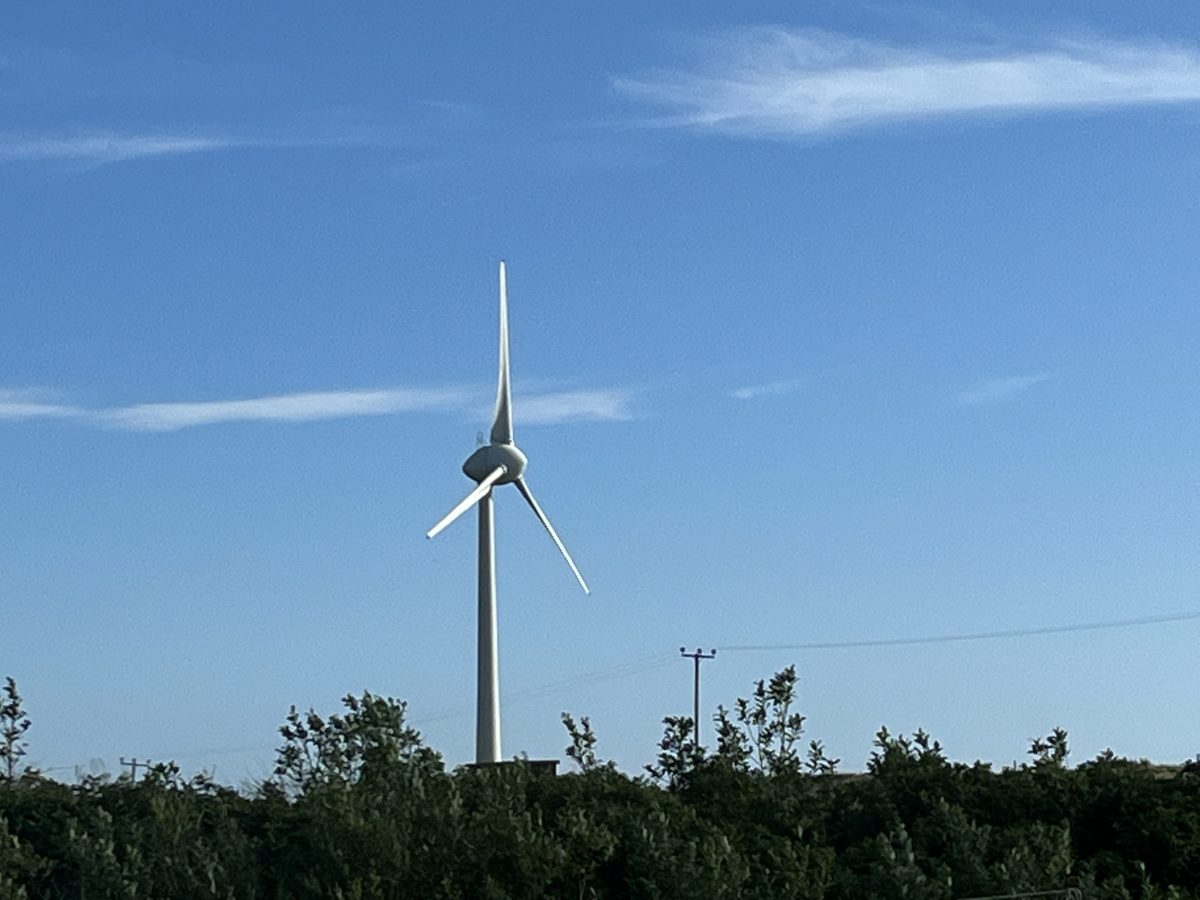
Review | The Shetland Way
Jean Urquhart •Jean Urquhart reviews The Shetland Way which explores the impact of a mega onshore wind project on Shetland’s society and natural environment
Amid the horrors resulting from Covid-19 there were some good things that came out of the enforced ‘lock-up’ as I called it. One of these is undoubtedly this new book The Shetland Way. Marianne Brown and her family were forced to remain in Shetland due to the travel ban. Their reason for being there was to arrange her father’s funeral. Her father, Bill Brown was a potter and head of the ceramics department at Glasgow School of Art until his retirement. This book is a result of the next six months and remarkably covers issues of loss, family, belonging, identity, community, environment, development and climate change.
Running like a thread throughout the book is the development of a massive onshore wind farm, reportedly the largest in Europe. Viking Energy is under construction in Shetland. Brown records the voices of those involved with its promotion and those who strongly objected. Through these conversations she learns more about her father, comes to terms with her own Shetland heritage and begins to know the land of her forebears. The ruins of her grandparents house lie a short distance from the house her father built on his return to Shetland and where she is living. Childhood memories of place, evocative smells of her fathers pipe and roll-ups, cherished pottery mugs made by him all combine to give us an insight into her own sense of who she is and the part of her that is Shetland.
Her research into Shetland language and customs is always respectful and warmly cherished; there are no assumptions or opinions or judgements. But rather she articulates and shares her own sense of discovery. It could be that this is the ‘Shetland Way’. By summer of 2020 the Viking wind farm is well underway. The discussions with those involved in this development are the meat of the book. It is a recorded history of the battle for community involvement, well-being and prosperity. These conversations give good insight to the reasons for supporting the development and reasons for objecting to it. Those in favour see an opportunity for Shetland to own, and therefore profit from the energy produced. This would give a guarantee of income to supplant the ever decreasing income provided in previous years from the oil and gas industry. But at what cost? The industrialisation of a treasured landmass on North Mainland. Threats to birdlife and peatland. Disruption to those living within its environs, pollution during construction, and possible health risks. Brown investigates the site, learns of the threat to birdlife and listens to the developers reassurances with regard to their proposed solutions. Again, she makes no judgement, but listens and reflects on all of the issues.
The final outcome, sadly, cannot be endorsed by either the supporters or the objectors. The original estimate of £20/30 million income to the isles is now reduced to a prescribed £2.2m ‘community benefit’ with the owner Scottish and Southern Energy taking energy and profit out of Shetland. Putting this in context a five turbine farm in Yell (Shetland’s second largest island), wholly community owned, will provide a similar income. According to the ‘Shetland Times’ (4/07/25) Viking Energy’s 103 turbines have ‘earned’ constraint payments of £12m in less than a year. That is, to turn the turbines off. In the meantime Shetland folk are paying the highest price for electricity in Britain and talks of a compensatory Shetland rate, to combat fuel poverty in the Isles appear moribund.
All across the Highlands and Islands this is the pattern of renewable energy development. Landowners profiting well from the rent of land, and local communities offered crumbs from the table while large corporations reap the real financial rewards. Brown notes that:
Different teams were brought in for different jobs and it was workers from Romania who had completed the cathedral roof. A Danish company, Vestas, was supplying turbine components. For each turbine, the three blades came from Italy and the four tower sections from Spain. At the top was the nacelle, a box which contained the gearbox and generator, and in front of this was the hub, the cone to which the blades attached – all these were from China.
Farming the wind in Shetland was a global effort, and the switching from fossil fuels to renewable energy will be, generally speaking, for the global good.
The government of the day did not deal well with the discovery of oil in this country. It relinquished ownership and (arguably) squandered the income. Should we accept that this is the future for renewables too?
In the closing chapters of The Shetland Way, Brown meets with Dr Dipali Mathur, a postdoctoral student specialising in e-waste. Her comments are profound. She explains
… the world’s addiction to economic growth has used and abused some of the poorest and most vulnerable. Since the 1970’s, when everything was changing in Shetland, global economics was also transforming. It was driven by an ideology known as neoliberalism, under which citizens become consumers and the ‘market’ replaces the state. Our economic system has been rigged to exploit and extract natural resources, including human labour, for the cheapest price possible.
The Shetland Way is a joy to read. Brown has real insight as an environmental journalist, she has the dual advantage of not being a permanent resident together with a strengthened blood tie to the Isles. This book will resonate with many on every front. I’d like to invite Brown to return to Shetland and apply her investigative journalist skills to the new Space Port at Saxa Vord in Unst for The Shetland Way – Volume 2.
The Shetland Way by Marianne Brown is published by The Borough Press 2025







0 comments